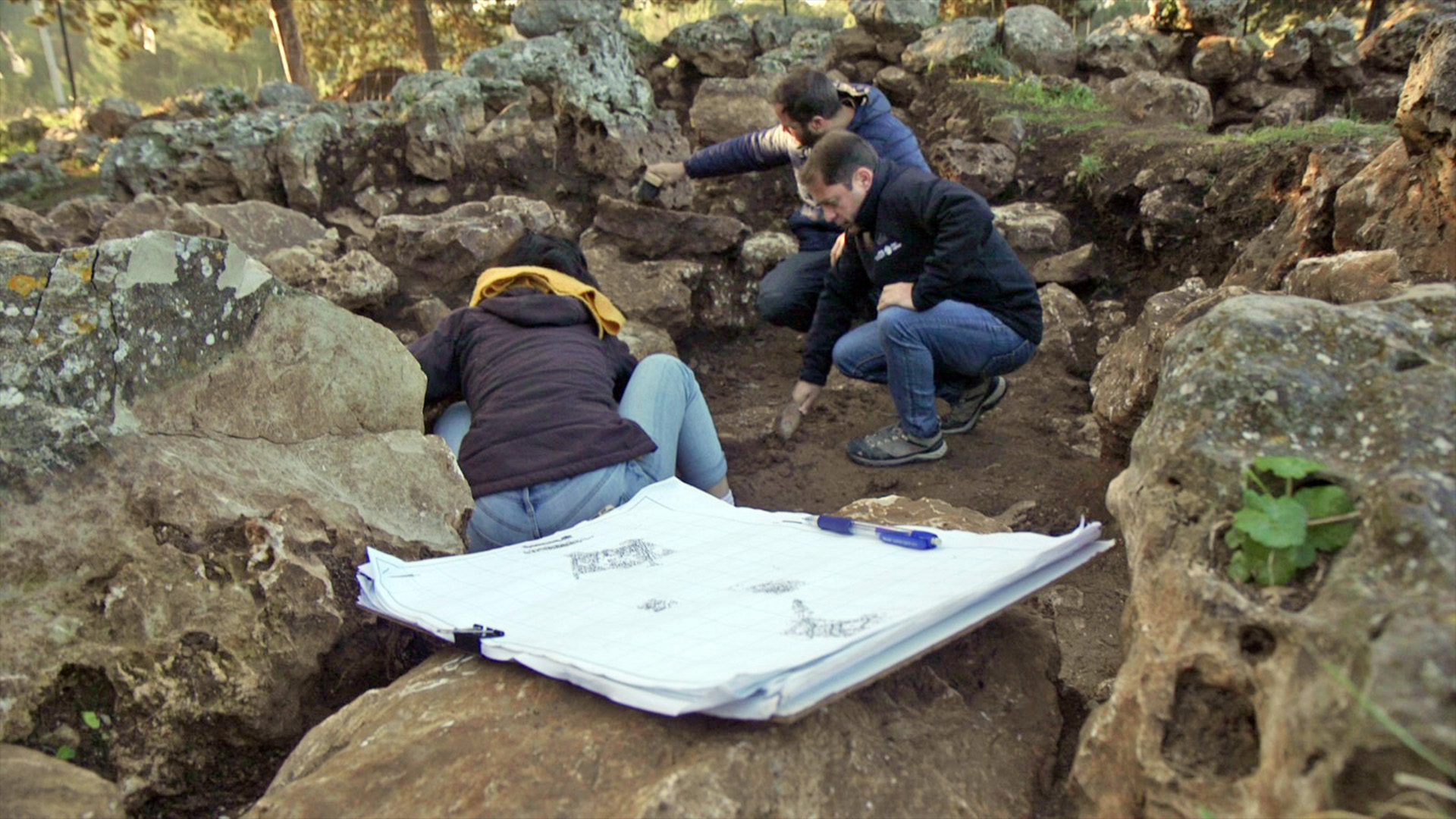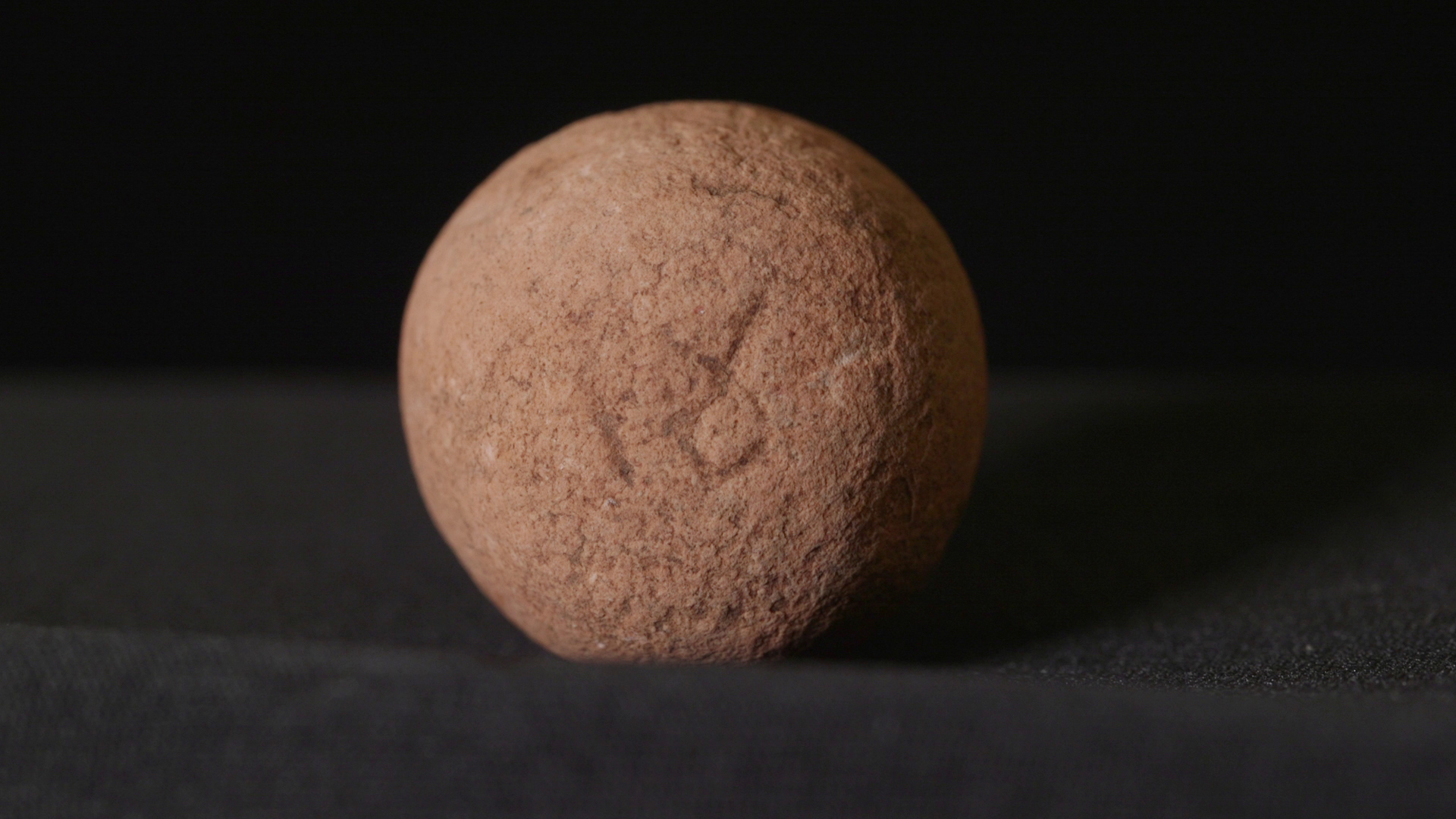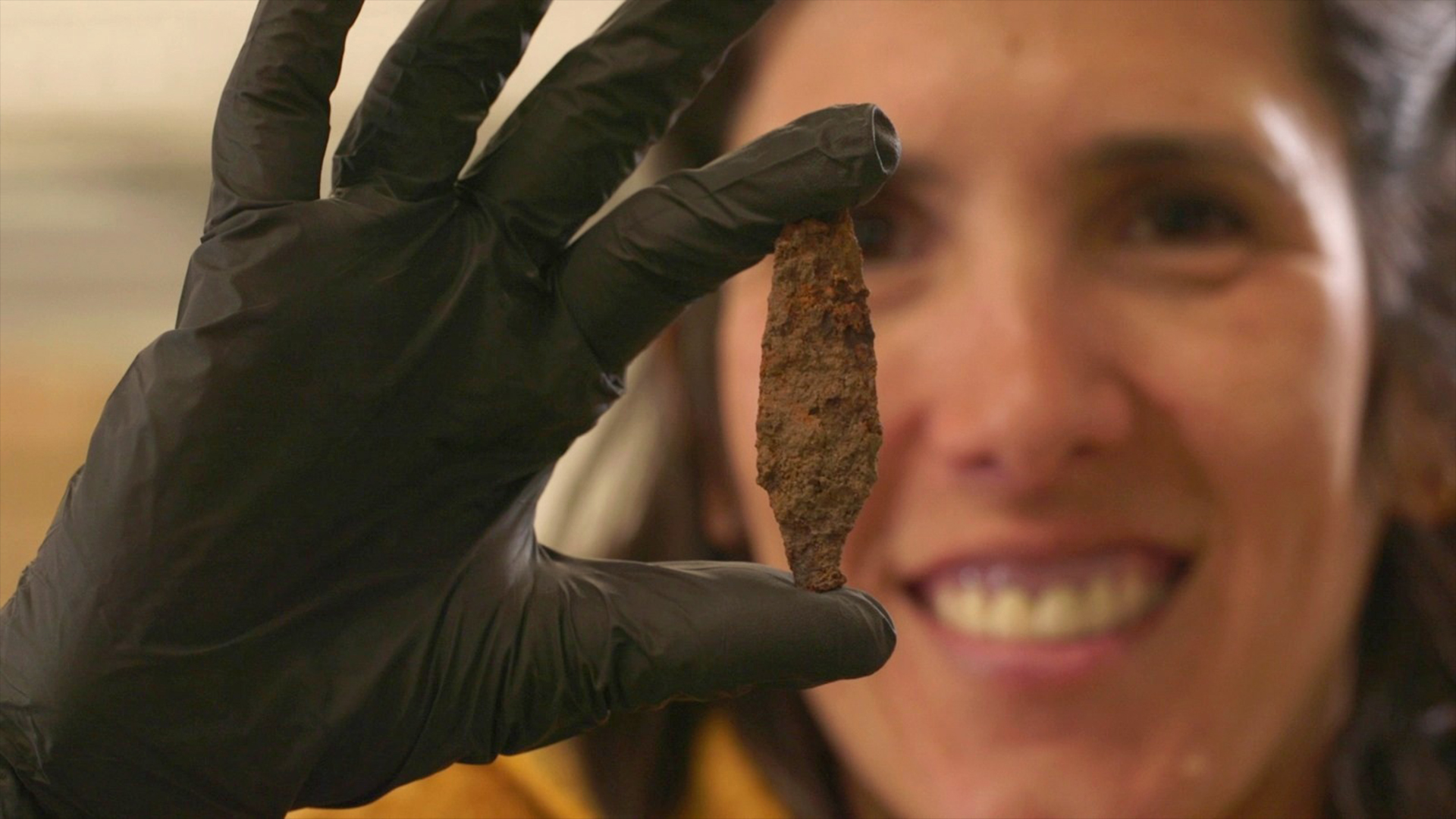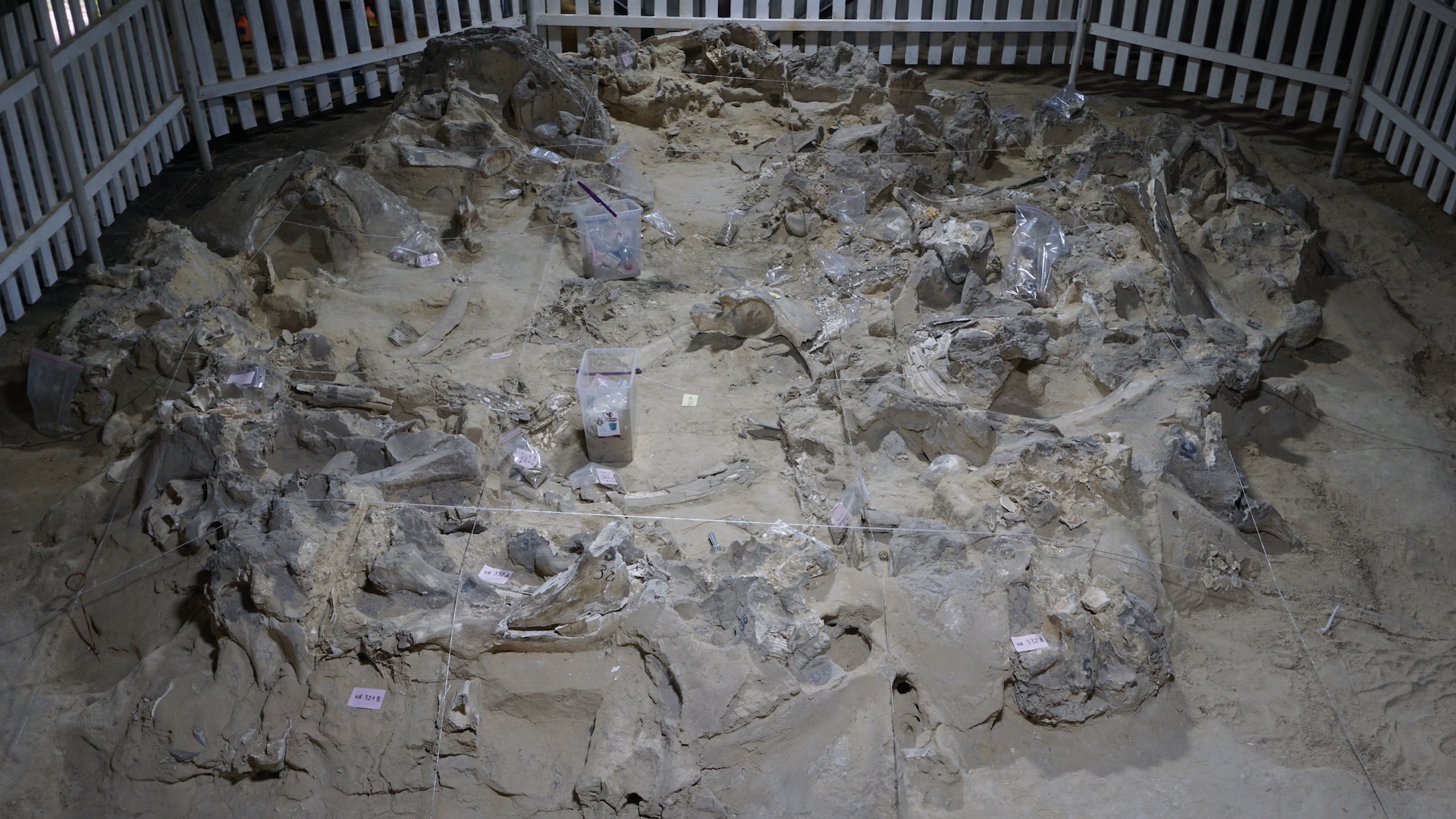'Extremely rare' 2,500-year-old broken silver coin unearthed near Jerusalem
The find is rare evidence that such early coins were being used for commerce in the region.
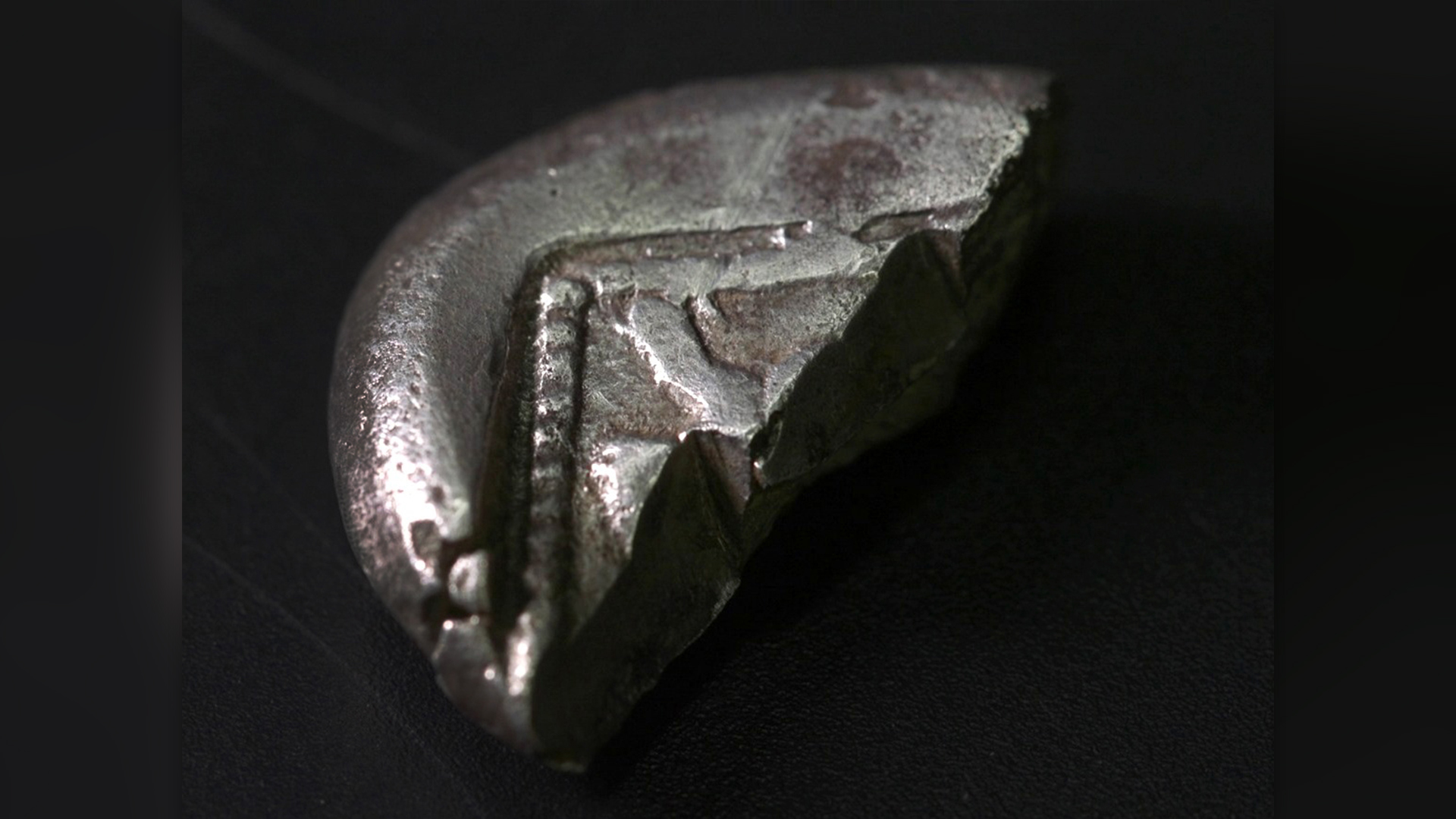
A broken 2,500-year-old silver coin unearthed near Jerusalem is rare evidence that early currency was used in ancient Judea, according to archaeologists.
It's one of only a handful of coins of this age — made in the sixth or fifth century B.C., when Judea was under the control of the Achaemenid Persians — that establish their very early use in the Holy Land.
This coin, however, was deliberately cut in two, probably so each half could be valued for its weight in silver.
"The coin is extremely rare, joining only half a dozen coins of its type that have been found in archaeological excavations in the country," Robert Kool, a coin expert at the Israel Antiquities Authority (IAA), said in a statement. "The coins were minted in a period when the use of coins had just begun."
Archaeologists found the ancient coin during an excavation before the expansion of a roadway about 10 miles (16 kilometers) southwest of Jerusalem.
Related: 1st-century coins from Jewish revolt against the Romans discovered near the Black Sea
The region was a rural area of the ancient Kingdom of Judea, which had its capital at Jerusalem. A settlement had probably been founded on the land in the seventh century B.C. during the First Temple period, the statement said, before the Babylonians destroyed the temple and exiled the Jews in 586 B.C.
Get the world’s most fascinating discoveries delivered straight to your inbox.
The remains of a "four room house," a traditional dwelling during this period, were also unearthed at the site, and the archaeologists found a spherical sheqel weight — just under half an ounce (11 grams) — on the floor of one of its rooms.
The IAA statement said the standardized weight was evidence of early trade and would have been used for weighing metals, spices and other expensive commodities.
Early coin
The rare finds show how trade was carried out in Judea during this time, when commerce moved from weighing silver pieces for payment to the use of coins, Kool said in the statement.
Such early coins "were minted outside Israel, in the regions of ancient Greece, Cyprus, and Turkey," he said. "In the sixth and fifth centuries BCE [before the common era], such coins began to appear at sites in the land of Israel."
The fact that the coin was broken in two, so that each half could be valued as its weight in silver — an ancient practice now known by the Viking name "hacksilver" or "hacksilbur" — shows that the use of coins was not universal at this time, however.
The coin was minted with a square stamp pressed into one of its sides; later coins used more sophisticated techniques that resulted in protruding stamped images, rather than sunken ones, the statement said.
Eli Escusido, the IAA's director, said the visual details, inscriptions and dates on early coins are a crucial source of archaeological information.
"Through a tiny object like a coin, it becomes possible to trace human thought processes and observe that our economic habits have remained largely unchanged for thousands of years," he said in the statement. "Only the technology has changed."
According to the Austrian Archaeological Institute, the earliest coins seem to have been minted in about the seventh century B.C. in the kingdom of Lydia, in what's now Turkey, and in the ancient Greek cities of the nearby Ionian coast.
The first coins were made of electrum, a naturally occurring alloy of gold and silver, but pure silver became standard in later centuries.
Tom Metcalfe is a freelance journalist and regular Live Science contributor who is based in London in the United Kingdom. Tom writes mainly about science, space, archaeology, the Earth and the oceans. He has also written for the BBC, NBC News, National Geographic, Scientific American, Air & Space, and many others.


